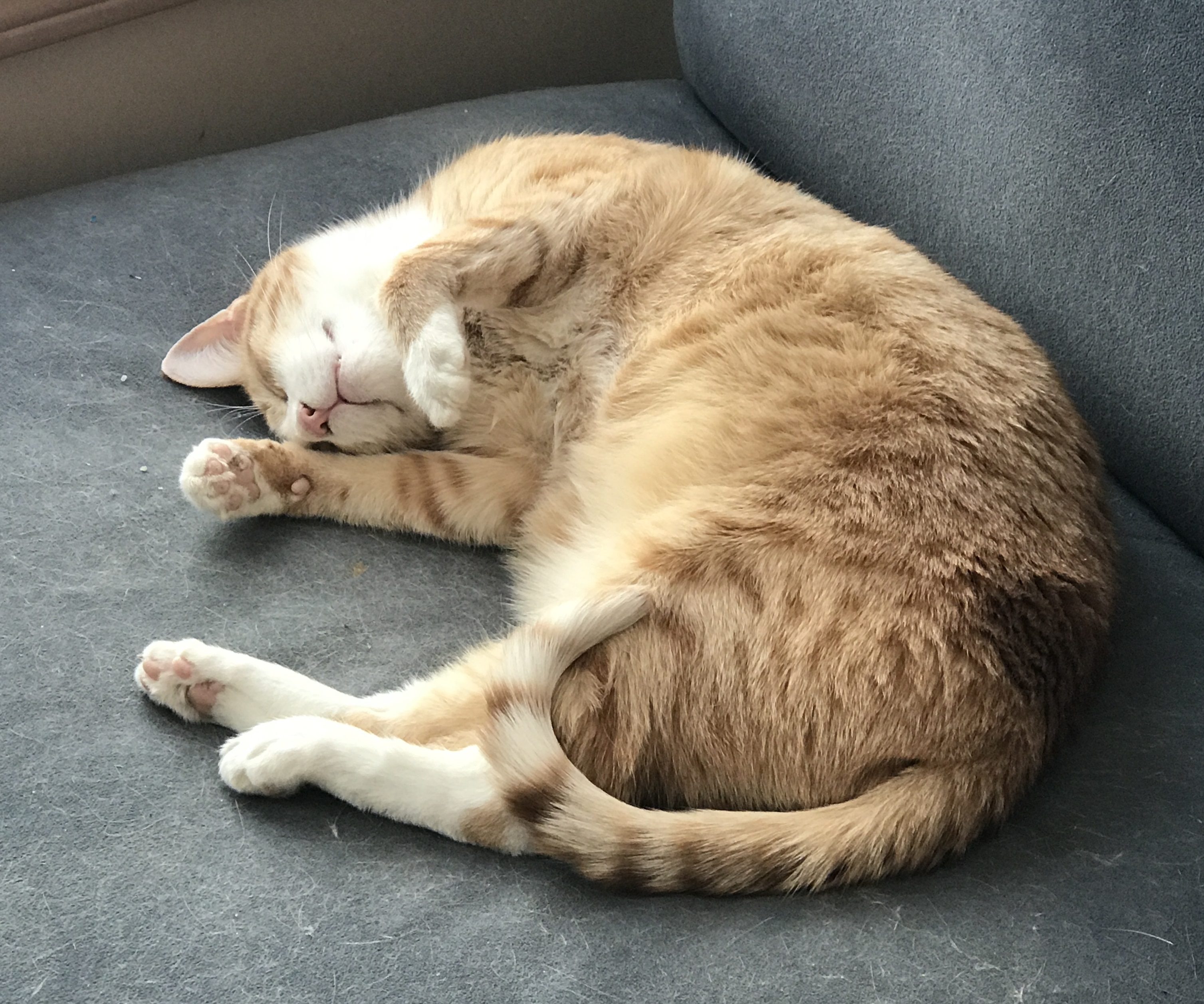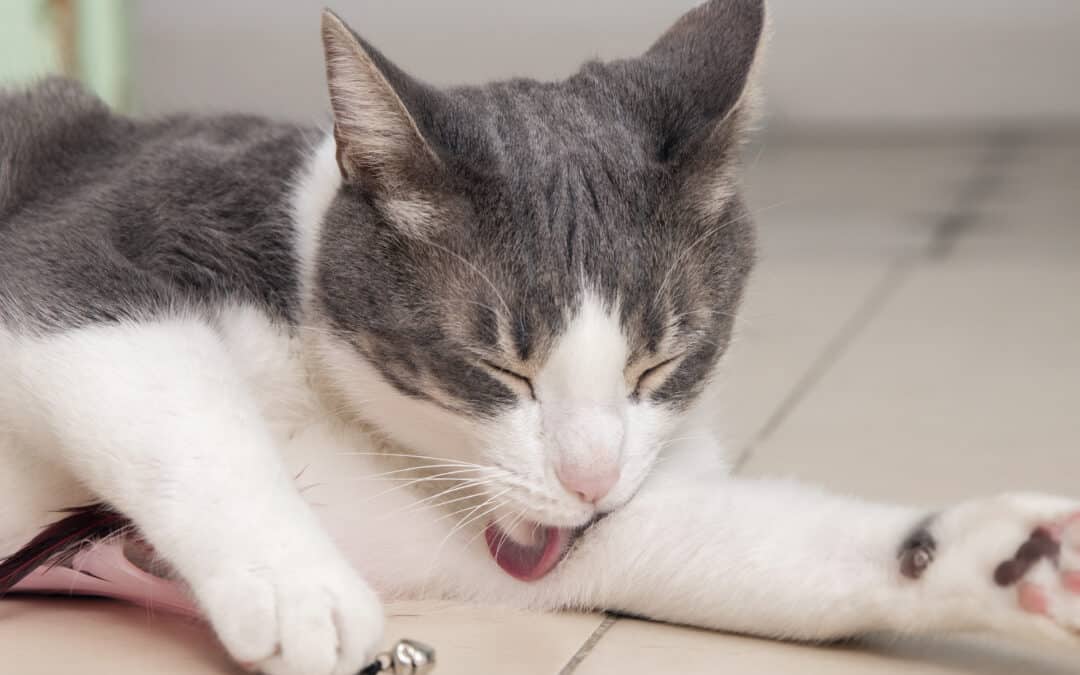When your feline friend is acting out of sorts, it might be more than just a bad day; they could be experiencing a fever in cats. Recognizing the symptoms early can make a significant difference in your cat’s health and comfort.
Fever symptoms are less visible in cats. Signs of a fever can include a lack of appetite, weakness, lethargy, dehydration, shivering, and a warm face or ears. The best way to know if your cat has a fever is to take their temperature. The normal body temperature for a cat is between 99.5 and 102.5 degrees F.
What is Cat Fever?
Table of Contents
Cat fever is the body’s response to various conditions, typically indicating an underlying issue. Like humans, a cat fever signifies that their immune system is fighting off an intruder.
What Is The Normal Temperature Range For Cats?
Understanding what’s normal is key to identifying a fever. A typical temperature range for cats falls between 100.5 and 102.5 degrees Fahrenheit. Anything above this range could suggest your cat has a fever.
What Causes Fever In Cats?
Several factors can lead to a fever in cats, from minor ailments to more serious conditions. These are fever in cat’s main causes.
Infections are common culprits behind fevers in cats. Whether it’s a simple bacterial infection or something more complex like a viral or fungal invasion, each can elevate your cat’s temperature as their body attempts to fend off the illness.
Inflammation
Inflammation from injuries or diseases like arthritis can also cause a cat’s temperature to rise as the body responds to heal the affected areas.
External Agents
Occasionally, things from the outside environment such as certain toxins or medications can trigger a fever.
How To Tell If Your Cat Has A Fever
While not 100% accurate, there are several symptoms you can look at and figure out if your cat is not feeling well.
Warm Ears And Paws
While not a definitive method, feeling your cat’s ears and paws for excessive warmth can be a quick initial check for fever.
Increased Heart Rate
A fever can cause an increase in your cat’s heart rate, so if you notice it’s faster than usual, this could be a sign.
Lethargy
A significant change in energy levels, with your cat becoming unusually lethargic, may indicate that their body is stressed from a fever.
Dry Nose
While not a surefire indicator due to the varying normal dryness of a cat’s nose, a hot, dry nose could be a symptom of fever.
Loss Of Appetite
Refusal to eat is another sign that your cat may not be feeling well and could have a fever.
How To Tell If Your Cat Has A Fever Without A Thermometer
Determining if your cat has a fever without a thermometer can be tricky, but some symptoms may start showing. Look for behavioral signs like reduced activity, decreased appetite, increased sleep, or hiding. Physical symptoms include warm ears, a hot, dry nose, or shivering.
How to Measure Cat Temperature at Home

To measure your cat’s temperature at home, you’ll need to use a digital thermometer. You will also need lubricant, wipes, and treats to reward your cat after the unpleasant experience.
Calm your cat and, if possible, have someone help you. Gently lift the cat’s tail and insert the lubricated thermometer into the rectum about 1 inch deep. Wait for the thermometer to beep, indicating it has the reading, then remove it carefully. Clean the thermometer with alcohol wipes or soap and water.
Recommended Areas for Temperature Measurement
The recommended areas for temperature measurement are the ear or rectum. Ear thermometers designed for cats can be a less invasive option, while rectal thermometers provide the most accurate readings.
How To Treat Fever In Cats?
Here are a few paths you can consider to treat your feline friend.
Veterinary Care
Seeking veterinary care is crucial. A professional from Paoli Vetcare can provide a thorough examination and recommend a course of action.
Diagnostic Tests
Diagnostic tests may include blood work, urinalysis, or imaging studies to determine the underlying cause of the fever.
Treatment Options
Treatment options will vary based on the diagnosis but may involve antibiotics, anti-inflammatory medications, or supportive care like fluids.
It’s also important to ensure your cat’s environment is conducive to recovery. For hygiene tips, check out how to keep your cat dish clean.
At Home
While home care is vital, remember it’s complementary and not a substitute for professional veterinary care.
Do: Keep Your Cat Hydrated
Ensuring your cat stays hydrated is essential. Encourage drinking by providing fresh water or tempting them with ice cubes or wet food.
Do: Use a Damp Cloth on Paws, Nose, and Ears
You can help cool your cat down by gently applying a damp cloth to their paws, nose, and ears.
Do: Keep Your Cat in a Fresh Room
Maintain a comfortable, cool environment for your cat to rest in, away from any heat sources.
Don’t: Use Over-The-Counter Medication To Reduce Your Cat’s Fever
Never give your cat human medications unless directed by a veterinarian, as many can be toxic to cats.
Cat Fever Recovery
Recovery from a fever in cats is largely contingent on the root cause and the response to treatment. It is essential to follow through with the full course of any prescribed medication, even if your cat appears to be feeling better.
Monitoring your cat’s behavior and temperature post-treatment is also vital to ensure they are on the right track to recovery.
In addition to professional care, maintaining a stress-free environment and providing nutritious food can aid in the recuperation process. With consistent, attentive care, both at home and under the guidance of your veterinarian, the prognosis for cats recovering from a fever is generally positive.
A strong partnership with a trusted veterinarian can make all the difference, ensuring your feline friend receives the best possible care during their recovery.
At Paoli Vetcare, their range of Veterinary Services can provide the care your pet needs. If you’re a new client, consider using the New Client Exam.
Conclusion
Fever in cats is a significant symptom that requires attention. Understanding how to tell if your cat has a fever, how to measure cat temperature at home, and how to treat fever in cats are vital steps in ensuring your cat’s health.
For professional care and detailed guidance on managing your cat’s fever, the dedicated team at Paoli Vetcare is ready to help, offering comprehensive care tailored to your cat’s unique needs.







